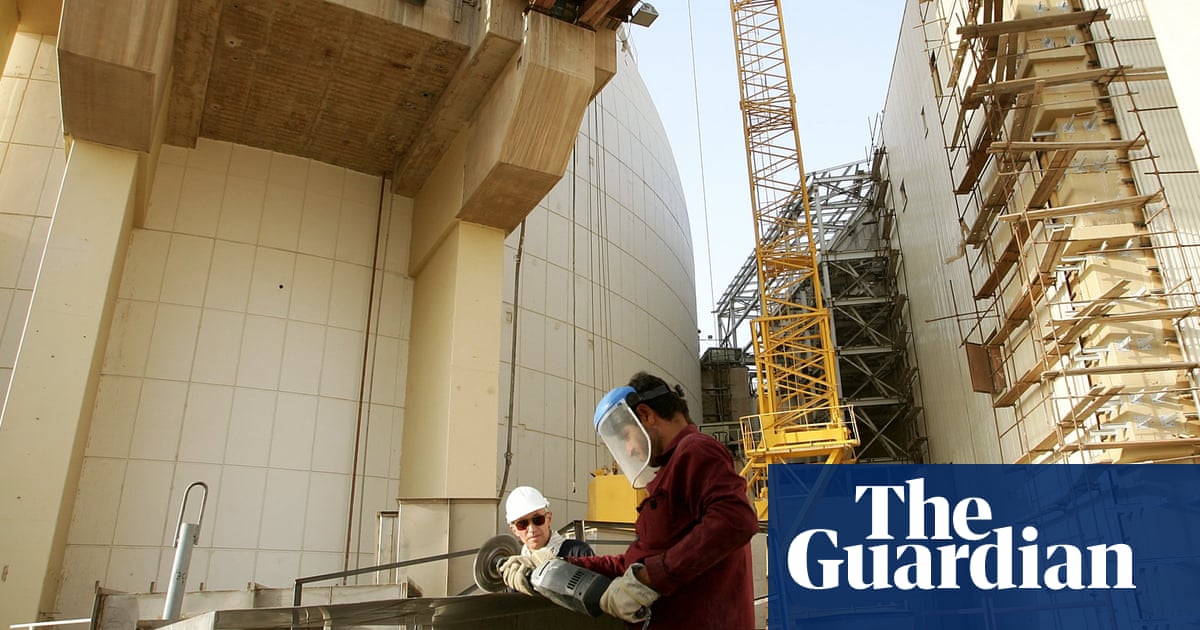In justifying Israel’s attack on Iran, Israel’s prime minister,Benjamin Netanyahu, said he had acted to pre-empt a secret Iranian programme to build a nuclear bomb, claiming Tehran already had the capacity to build nine nuclear bombs. Israeli officials also claimed to have presented information to the US that Iran had recently made the necessary technical breakthroughs.
Netanyahu’s critics are saying he acted to pre-empt something else: a diplomatic agreement between the US and Iran on its civil nuclear programme, or even the demise of his own government. They point out thatIsraelhas been saying for 20 years that Iran is on the brink of building a bomb.
Either way, his claim largely depends on Israel’s formidable intelligence community possessing a greater state of knowledge about Iran’s nuclear programme than either its US counterparts or the UN nuclear watchdog, the International Atomic Energy Agency (IAEA).
As recently as 25 March, Tulsi Gabbard, the US director of national intelligence, told the Senate intelligence committee that the American intelligence community had assessed thatIranwas not actively pursuing a nuclear weapon.
However, Gabbard added that in the past years, there would appear to have been “an erosion of a decades-long taboo in Iran on discussing nuclear weapons in public, likely emboldening nuclear weapons advocates within Iran’s decision-making apparatus”.
She added: “Iran’s enriched uranium stockpile is at its highest levels and is unprecedented for a state without nuclear weapons.”
A 22-page report declassified by the IAEA boardthis weekdid not say Iran was so close to a nuclear weapon. It said it had been unable to see aspects of Iran’s civil nuclear programme, and believed Tehran had repeatedly failed to cooperate, particularly over its past secret nuclear programme.
It concluded that it could not verify that Iran’s civil nuclear programme was exclusively civilian. But it did not say Iran was on the verge of a nuclear weapon.
The IAEA report looks at Iran’s progress towards building a bomb, its level of cooperation with UN inspectors and its stockpiles of enriched uranium.
On the first point, the IAEA has since 2019 been examining Iranian human-made uranium particles at three undeclared locations in Iran: Varamin, Marivan and Turquz Abad. This was part of an Iranian nuclear programme codenamed Amad, which has been known about for years and is believed to have ended in 2003.
The report concluded that “these three locations, and other possible related locations, were part of an undeclared structured nuclear programme carried out by Iran until the early 2000s and that some activities used undeclared nuclear material”.
The IAEA director, Rafael Grossi, told the board: “Unfortunately, Iran has repeatedly either not answered, or not provided technically credible answers to, the agency’s questions. It has also sought to sanitise the locations, which has impeded agency verification activities.”
The IAEA concluded that aftersuccessful implosion tests, Iran had intended to proceed with cold tests – conducted with a fully assembled bomb with a core of natural or depleted uranium rather than one of weapons-grade uranium – and had been conducting blast shielding tests in preparation.
Together these conclusions appear to confirm the breadth of Iran’s previously disclosed nuclear programme, suggesting also that this knowledge will not have been lost in the Iranian scientific community.
On the second issue – access to sites – the IAEA report states it is not being given the access it requires, and has not been shown plans for new nuclear facilities. Since February 2021, Iran has denied IAEA access to recorded data from centrifuge production plants. Although a few cameras were reinstalled at centrifuge production plants in May 2023, the agency still cannot access the recordings.
From the Iranian perspective, all these steps were permissible countermeasures to Trump’s2018 withdrawal from the nuclear deal.
On the third point, the report found that Iran had been accumulating a stockpile of highly enriched uranium way beyond the levels set out in the 2015 nuclear agreement. Iran’s stockpile of 60%-enriched uranium had grown from 274.8kg in early February to 408.6kg, an increase of about 50%. This is enough fuel for nine warheads, depending on how much highly enriched uranium is in the finished core of each nuclear weapon.
The IAEA report concluded that it had “no credible indications of an ongoing, undeclared structured nuclear programme” and noted that senior Iranian officials had said that the use of nuclear weapons was incompatible with Islamic law.
But it also pointed to statements from former Iranian officials who suggested that Tehran now had all the capabilities to manufacture nuclear weapons.
“While safeguarded enrichment activities are not forbidden in and of themselves, the fact that Iran is the only non-nuclear-weapon state in the world that is producing and accumulating uranium enriched to 60% remains a matter of serious concern,” it said.
Asked in April when Iran might be capable of weaponising its missile warheads, Grossi said: “Dates are always arbitrary. But they are not far. It would be, you know, a matter of months, not years.”
